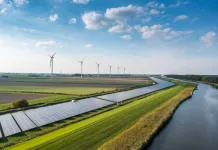The automotive world has its gaze fixed on a potent development: General Motors (GM) and Contemporary Amperex Technology Co. Limited (CATL), a titan in the electric vehicle battery industry, are engaging in discussions that could lead to the establishment of an impressive joint battery factory on North American soil. This speculative alliance converges amid the ever-growing dominance of Chinese companies in global electric vehicle markets, including the US and Europe. Understandably, the prospect of this partnership has sparked various industry and political reactions.
The Political Landscape Influencing Battery Production
Propelled by political tension, the prospect of a CATL-operated facility has, in the past, been met with resistance. Citing concerns over the influence of the Chinese Communist Party, public figures like Virginia’s Governor Glenn Youngkin expressed concerted opposition to such moves, highlighting the complexities faced by Chinese companies seeking to invest in North American ventures.
Despite such challenges, Ford streamlined a unique strategy for collaboration by leading the ownership of a Michigan-based factory to leverage CATL’s cutting-edge technology. However, this initiative has not been immune to contention, with certain communities in Michigan expressing reluctance to involve CATL. Moreover, Ford‘s fluctuating production targets for its F-150 Lightning have cast uncertainty over the status and operations of this collaborative factory.
The CATL & GM Joint Enterprise on the Horizon
If prevailing reports hold true, GM may be steering toward an agreement with CATL to erect a plant dedicated to producing LFP (lithium iron phosphate) battery cells. The size and scale of this proposed joint venture remain speculative, but the move signifies a broader openness to Chinese battery expertise within the automotive sector.
As GM contemplates cheaper LFP cells for future electric vehicles, contrasting its endeavors with LG Energy Solution for NMC (nickel manganese cobalt) cells, CATL stands as a formidable leader in the LFP market, setting a competitive price point that could redefine battery economics for electric cars.
Navigating US Policy: The CATL and GM Synergy and the Inflation Reduction Act
Complexities arise considering the US Inflation Reduction Act, which currently excludes EVs equipped with Chinese batteries from subsidy entitlements. Nevertheless, the duo of CATL and GM seem positioned to navigate these stipulations, conceivably aligning their operations with US regulatory criteria to maintain eligibility for pivotal incentives.
CATL’s strategic license model, which facilitates technological partnership without direct factory ownership, has become a pivotal method for expanding its influence, already teasing at similar discussions with numerous car manufacturers from the US and Europe. Even Tesla joins the ranks of those eager to collaborate, eyeing a significant expansion of its battery production with CATL’s assistance.
Confronting Protectionism: The Irresistible Appeal of Economic Incentives
History has a knack for repeating itself, and the protective measures employed against Japanese auto firms in the 1960s taught a valuable lesson: economic imperatives often triumph in the face of protectionism. As CATL’s prominence as the world’s leading battery producer soars, its global market penetration appears to be an inevitable outcome, notwithstanding the pushback from some sectors of the American populace.
In essence, the potential collaboration between GM and CATL not only serves as a beacon for technological advancement but also represents the confluence of economic forces, innovation, and political strategy that continues to sculpt the evolutive landscape of the automotive industry.

























